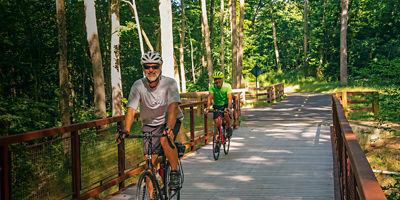
Sure, you can take it to a shop, but depending on the season, there might be significant service delays until you can ride again. On top of that, you’ll have to pay, of course. With a bit of know-how, though, you can tackle many common bike maintenance issues to ensure it rolls for the season ahead, giving you a smoother, more comfortable, and reliable ride. Here are some basic maintenance guidelines and tips.
DO: Check Your Tires
It sounds simple, but just like in your car, a properly inflated tire will keep you running smoothly and help prevent flats or damage to your tire. Check your tire’s sidewall for the proper PSI recommendation and use a floor pump with a pressure gauge to get the perfect fill.
DON’T: Ride a Dirty Bike
Grit and dirt can wear out the components of your bike and work their way into sensitive systems like your handlebar shifters and derailleurs. Any other maintenance or adjustments you do on your bike will be largely worthless if they are made while your bike is dirty. A clean bike performs best and will work most reliably. After messy rides, spray and wipe dirt and grime off your bike, and regularly give your bike a deep cleaning, especially on your chain.
DO: Clean Your Chain
Again, a clean bike works best—especially as your chain can quickly become one of the dirtiest parts of your bike. Spray your chain, cassette, and chain ring off with degreaser, then backpedal your bike while scrubbing at the chain, cassette, and chainring with a brush, even a toothbrush will work. Wipe off your chain with a rag by backpedaling and lightly grabbing the chain with the rag. Then, apply a drop of lube to every link of the chain while backpedaling. Finally, run a clean section of your rag over your chain as you backpedal to remove excess lube.
DON’T: Let Things Rub
Properly lubricating your bike will keep it lasting for years to come. Put bike grease on all threaded pieces of your bike, like your pedal threads and your tire axle threads. Also grease the section of your seatpost that slides into the seat tube. If your bike is carbon, use carbon paste for the parts, like your seat tube and seatpost, that touch each other.
DO: Tighten Bolts
Over the course of your riding, it's inevitable that some bolts will loosen. Regularly check important bolts, like those on your handlebars, or seat post, to ensure that they are tight. If you hear a rattle, find it and tighten the bolt. A torque wrench is a great tool to help ensure that your bolts are tight enough, without doing any damage.























